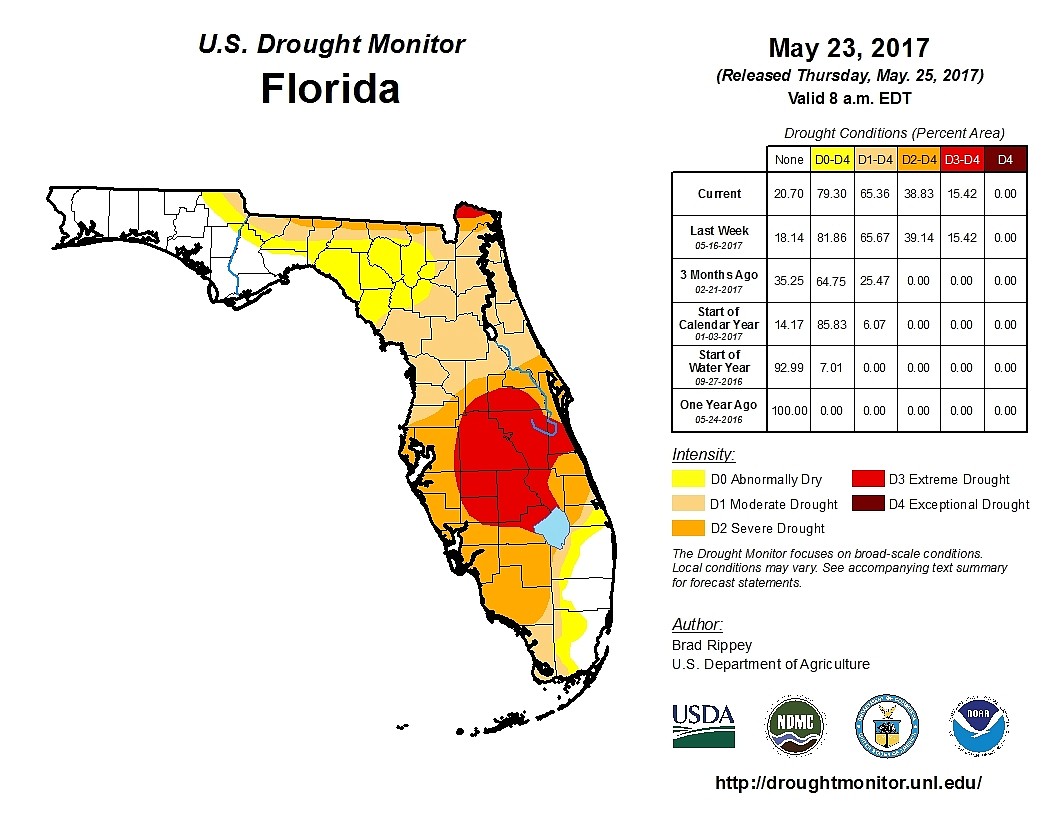- April 4, 2025
-
-
Loading

Loading

ORANGE COUNTY –– Although the coming rainfall certainly is welcome in the middle of a prolonged drought, it likely will take a few months for Florida’s aquifer levels to recover from the dry winter.
In anticipation of that recovery period, the St. Johns River Water Management District on May 9 expanded its water shortage warning to all 18 counties under its jurisdiction, which includes a portion of Orange County.
Central Florida has seen several brush fires since the SJRWMD first issued a water shortage warning in March. Orange County Fire Rescue spokeswoman Ngoc Huynh said the department has responded to 285 brush fires from March 1 to May 26 — 32 of which required assistance from the Florida Forest Service to extinguish. In 2016, OCFR responded to 115 brush fires within the same time frame.
“I think part of the issue is that even though we got some rain recently, it’s still not what we need in order to avoid dry conditions,” Huynh said.
Although brush fires generally are classified as one of three categories depending on the number of units dispatched, the dryness of the area and certain weather conditions, the department tends to elevate the category as a precaution during dry conditions.
Regardless of the conditions, the district’s water shortage warning is based on data-driven analysis that stems from rainfall and groundwater levels that are in more than 2,000 sites throughout its jurisdiction.
To ensure the water residents consume does not overwhelm the supply available at any one time, the district requests residents and commercial businesses abide by the year-round mandatory watering restrictions, which can differ depending on the time of year.
“We’re entering the wet season, which begins (in June), and so we should anticipate additional rain, although we do have a period that we need to make up for,” said SJRWMD spokeswoman Danielle Spears. “Conditions haven’t reached a point where there’s an expectation of insufficient water to meet demand, but we are at a point where we do need to elevate the conversation about conserving water.”
The counties within the district’s jurisdiction that had the least amount of rain were Orange, Brevard, Osceola and Okeechobee, each of which received less than one inch during May.
The last water shortage warning was issued in 1999, but if groundwater levels do not recover quickly enough, the district could issue a higher phase warning that could potentially lead to more restrictions and increases in water bills due to the constraint on water allocations.
“You’re not going to run out of water; you’re going to run out of cheap drinking water, and that’s what groundwater is,” Spears said. “What we do is we basically allocate the water to utilities and say, ‘OK, you can take X amount of groundwater per day.’ So that’s our role. But some of them do have tiered billing, which means that as use goes up, the cost goes up.”
–––
Contact Gabby Baquero at gbaquero@orangeobserver.com.